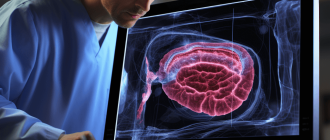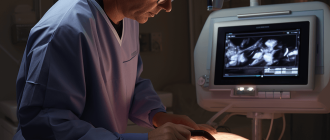 Comparison of Gastric and Duodenal Ulcers: Understanding the Key Differences
Comparison of Gastric and Duodenal Ulcers: Understanding the Key Differences
Gastric and duodenal ulcers are two common types of peptic ulcers that occur in the digestive system. While they share some similarities, such as being caused by the same bacteria, Helicobacter pylori, there are also key differences between the two.
Gastric ulcers are sores that develop in the lining of the stomach, while duodenal ulcers occur in the first part of the small intestine called the duodenum. One of the main differences between the two is the location of the ulcers. Gastric ulcers are typically found on the lesser curvature of the stomach, while duodenal ulcers are usually found on the upper part of the duodenum.
Another difference lies in the symptoms experienced by individuals with gastric and duodenal ulcers. Gastric ulcers often cause pain that worsens after eating, while duodenal ulcers may cause pain that improves after eating. This is because gastric ulcers tend to be aggravated by the presence of food in the stomach, while duodenal ulcers are relieved by food entering the duodenum.
Treatment options for gastric and duodenal ulcers also differ. Gastric ulcers are usually treated with a combination of antibiotics to eradicate the H. pylori bacteria and medications to reduce stomach acid production. On the other hand, duodenal ulcers are typically treated with medications that help protect the lining of the duodenum and reduce stomach acid production.
While gastric and duodenal ulcers share some similarities, such as being caused by H. pylori, they also have distinct differences in terms of location, symptoms, and treatment. Understanding these differences is important for proper diagnosis and management of these common digestive disorders.
What is the difference between a stomach ulcer and a duodenal ulcer?
A stomach ulcer, also known as a gastric ulcer, is an open sore that forms on the lining of the stomach. On the other hand, a duodenal ulcer is a similar type of open sore, but it develops in the upper part of the small intestine, known as the duodenum.
One key difference between the two types of ulcers is their location. Stomach ulcers occur in the stomach, while duodenal ulcers occur in the duodenum. The duodenum is the first part of the small intestine, which is connected to the stomach.
In terms of symptoms, both types of ulcers can cause similar discomfort. However, there are some differences in the specific symptoms experienced. Stomach ulcers often cause a burning or gnawing pain in the upper abdomen, while duodenal ulcers typically cause a similar pain but slightly lower in the abdomen or around the belly button. Duodenal ulcers may also cause other symptoms such as bloating, nausea, and a feeling of fullness.
The causes of stomach and duodenal ulcers can also vary. Stomach ulcers are often caused by the bacteria Helicobacter pylori (H. pylori), while duodenal ulcers can also be caused by this bacteria but are more commonly associated with excessive acid production in the stomach.
Treatment for both types of ulcers may involve medications to reduce stomach acid, antibiotics to treat bacterial infections, and lifestyle changes such as avoiding certain foods or reducing stress. In some cases, surgery may be necessary to treat severe or recurring ulcers.
The main difference between a stomach ulcer and a duodenal ulcer is their location – stomach ulcers occur in the stomach, while duodenal ulcers occur in the duodenum. Additionally, the symptoms and causes of the two types of ulcers can also vary.
What is duodenal ulcer?
A duodenal ulcer is a type of peptic ulcer that occurs in the first part of the small intestine, called the duodenum. It is a sore or open wound that forms in the lining of the duodenum, which is responsible for receiving partially digested food from the stomach.
Duodenal ulcers are commonly caused by a bacterial infection called Helicobacter pylori (H. pylori) or by long-term use of nonsteroidal anti-inflammatory drugs (NSAIDs), such as aspirin or ibuprofen. These factors can disrupt the balance of stomach acid and protective mucus in the duodenum, leading to the formation of an ulcer.
Symptoms of a duodenal ulcer may include abdominal pain, especially on an empty stomach or at night, a feeling of fullness or bloating, heartburn, nausea, and vomiting. The pain can be relieved temporarily by eating or taking antacids, but it may come back a few hours later.
Diagnosis of a duodenal ulcer usually involves a physical examination, medical history review, and various tests, such as blood tests, stool tests, or upper gastrointestinal endoscopy. Treatment options for duodenal ulcers may include medications to reduce stomach acid production, antibiotics to eliminate H. pylori infection, and lifestyle changes to avoid triggers like smoking, alcohol, and certain foods.
If left untreated, duodenal ulcers can lead to complications such as bleeding, perforation, or obstruction in the digestive tract. Therefore, it is important to seek medical attention if you suspect you have a duodenal ulcer.
| Duodenal Ulcer | Gastric Ulcer |
|---|---|
| Occurs in the first part of the small intestine (duodenum) | Occurs in the stomach |
| More common than gastric ulcers | Less common than duodenal ulcers |
| Caused by H. pylori infection or NSAID use | Caused by H. pylori infection or NSAID use |
| Abdominal pain, bloating, heartburn, nausea, and vomiting | Abdominal pain, bloating, heartburn, nausea, and vomiting |
| Treated with medications, antibiotics, and lifestyle changes | Treated with medications, antibiotics, and lifestyle changes |
What is gastric?
Gastric refers to anything related to the stomach. In the context of ulcers, gastric ulcers are sores that develop in the lining of the stomach. These ulcers can be painful and may cause symptoms such as stomach pain, bloating, and nausea.
Gastric ulcers are usually caused by a bacterial infection called Helicobacter pylori (H. pylori), which weakens the protective lining of the stomach. Other factors that can contribute to the development of gastric ulcers include the long-term use of nonsteroidal anti-inflammatory drugs (NSAIDs), excessive alcohol consumption, and smoking.
Treatment for gastric ulcers often involves a combination of medications to reduce stomach acid production, antibiotics to eradicate H. pylori infection, and lifestyle changes such as avoiding trigger foods and managing stress. In severe cases, surgery may be necessary to repair the damaged stomach lining.
It is important to differentiate gastric ulcers from duodenal ulcers, which are sores that develop in the first part of the small intestine called the duodenum. While both types of ulcers share some similar symptoms, they have distinct differences in terms of their location and causes.
If you suspect you have gastric ulcers or any other digestive issues, it is important to consult a healthcare professional for an accurate diagnosis and appropriate treatment.
Stomach ulcers form in the stomach lining
Stomach ulcers, also known as gastric ulcers, are painful sores that develop in the lining of the stomach. They are a type of peptic ulcer, which is a sore that forms in the lining of the digestive tract. Stomach ulcers primarily occur in the stomach, but they can also develop in the upper part of the small intestine, called the duodenum.
The stomach lining is a protective layer that helps to shield the stomach from the corrosive effects of stomach acid and digestive enzymes. When this lining is damaged or weakened, stomach acid can erode the tissues and create an open sore, resulting in a stomach ulcer.
Stomach ulcers can be caused by several factors, including infection with the bacteria Helicobacter pylori, long-term use of nonsteroidal anti-inflammatory drugs (NSAIDs), excess acid production in the stomach, and lifestyle factors such as smoking and excessive alcohol consumption.
Symptoms of stomach ulcers can vary, but common signs include abdominal pain, bloating, heartburn, nausea, and vomiting. If left untreated, stomach ulcers can cause complications such as bleeding, perforation of the stomach lining, and obstruction of the digestive tract.
Treatment for stomach ulcers typically involves a combination of medication to reduce stomach acid, antibiotics to eradicate H. pylori infection (if present), and lifestyle changes such as avoiding trigger foods and managing stress. In severe cases, surgery may be necessary to repair the ulcer and prevent further complications.
Duodenal ulcers form in the upper intestine
Duodenal ulcers are a type of peptic ulcer that form in the small intestine, specifically in the first part called the duodenum. The duodenum is located in the upper abdomen, just below the stomach. It is the shortest and widest part of the small intestine, measuring around 10 inches in length.
Duodenal ulcers are typically caused by a bacterial infection called Helicobacter pylori (H. pylori) or by long-term use of nonsteroidal anti-inflammatory drugs (NSAIDs) such as aspirin or ibuprofen. These factors can increase the production of stomach acid or weaken the protective lining of the duodenum, leading to the development of an ulcer.
Symptoms of duodenal ulcers may include burning pain in the abdomen, particularly between meals or at night. The pain can be relieved by eating or taking antacids. Other common symptoms include bloating, nausea, vomiting, and weight loss.
To diagnose a duodenal ulcer, a doctor may perform an upper endoscopy, which involves inserting a thin tube with a camera into the mouth and down the throat to examine the duodenum. They may also order a blood test to check for the presence of H. pylori.
Treatment for duodenal ulcers typically includes a combination of antibiotics to eradicate H. pylori and medications to reduce stomach acid production. Lifestyle changes, such as avoiding NSAIDs and managing stress, can also help prevent the recurrence of duodenal ulcers.
| Duodenal Ulcers | Gastric Ulcers |
|---|---|
| Form in the upper part of the small intestine (duodenum) | Form in the stomach |
| Caused by H. pylori infection or long-term use of NSAIDs | Caused by H. pylori infection or excessive stomach acid production |
| Pain is typically relieved by eating or taking antacids | Pain may worsen after eating or taking antacids |
| Common symptoms include burning pain, bloating, nausea, and weight loss | Common symptoms include burning pain, indigestion, and loss of appetite |
Duodenal ulcer icd 10
The International Classification of Diseases, Tenth Revision (ICD-10), is a system of medical coding used for classifying and coding diseases, symptoms, and other health-related conditions. When it comes to duodenal ulcers, the ICD-10 code assigned to this condition is K26.0.
The code K26.0 specifically refers to “acute duodenal ulcer with hemorrhage.” This code is used to indicate a duodenal ulcer that is actively bleeding and causing symptoms such as gastrointestinal bleeding, melena (black, tarry stools), and hematemesis (vomiting of blood).
It is important to note that the ICD-10 code for duodenal ulcer may vary depending on the specific characteristics of the ulcer, such as whether it is perforated or has a different clinical presentation. Other codes that may be used for duodenal ulcers include K26.2 (acute duodenal ulcer with perforation) and K26.9 (unspecified duodenal ulcer).
Using the appropriate ICD-10 code for duodenal ulcers is essential for accurate medical record keeping, billing, and statistical analysis. Healthcare professionals and medical coders must ensure that the correct code is assigned based on the specific clinical documentation and guidelines provided by the World Health Organization (WHO).
Can you have both gastric and duodenal ulcer?
Yes, it is possible to have both gastric and duodenal ulcers at the same time. These two types of ulcers are related to different areas of the digestive system, but they can occur simultaneously in some cases.
Gastric ulcers are open sores that develop on the lining of the stomach, while duodenal ulcers occur in the first part of the small intestine called the duodenum. Both types of ulcers are usually caused by a bacterial infection with Helicobacter pylori, but other factors like excessive use of nonsteroidal anti-inflammatory drugs (NSAIDs), smoking, and stress can also contribute to their development.
The symptoms of gastric and duodenal ulcers can be similar, including abdominal pain, bloating, nausea, and vomiting. However, some differences may also be present. For example, gastric ulcers tend to cause pain that worsens after eating, while duodenal ulcers may cause pain that improves after eating or taking antacids.
It is important to note that having both gastric and duodenal ulcers may increase the severity of symptoms and complications. The risk of complications, such as bleeding or perforation, may be higher in individuals with multiple ulcers.
If you suspect that you may have both gastric and duodenal ulcers, it is essential to seek medical attention for proper diagnosis and treatment. A healthcare professional can perform tests, such as an endoscopy or a breath test, to determine the presence of ulcers and the appropriate treatment plan.
Yes, having both types at once is called gastroduodenal ulcer
In some cases, individuals may experience both gastric and duodenal ulcers simultaneously. This condition is known as gastroduodenal ulcer. While gastric ulcers occur in the stomach lining, duodenal ulcers develop in the upper part of the small intestine called the duodenum. The coexistence of both types of ulcers can lead to more severe symptoms and complications.
Gastroduodenal ulcers can result from various factors, including infection with the bacteria Helicobacter pylori, excessive use of nonsteroidal anti-inflammatory drugs (NSAIDs), smoking, and high levels of stomach acid production. The combination of these factors can increase the risk of developing both gastric and duodenal ulcers simultaneously.
The symptoms of gastroduodenal ulcers can vary but often include abdominal pain, bloating, heartburn, nausea, and vomiting. These symptoms may be more intense and persistent compared to having only one type of ulcer.
Diagnosis of gastroduodenal ulcers typically involves a series of tests, including endoscopy, blood tests, and stool tests. Treatment for gastroduodenal ulcers may include a combination of medications to reduce stomach acid production, antibiotics to eradicate H. pylori infection, and lifestyle changes to promote healing and prevent further complications.
It is essential for individuals with gastroduodenal ulcers to follow their healthcare provider’s recommendations and maintain regular follow-up appointments to monitor their condition and ensure proper healing. With appropriate treatment and lifestyle modifications, the symptoms of gastroduodenal ulcers can be managed effectively, and the risk of complications can be minimized.
Are gastric ulcer and duodenal ulcers cancerous?
Both gastric ulcers and duodenal ulcers are not inherently cancerous. They are types of peptic ulcers, which are open sores that develop on the lining of the stomach (gastric ulcers) or the upper part of the small intestine (duodenal ulcers). Peptic ulcers are primarily caused by the infection of Helicobacter pylori bacteria or long-term use of nonsteroidal anti-inflammatory drugs (NSAIDs).
While peptic ulcers themselves are not cancerous, they can increase the risk of developing stomach cancer. Untreated or severe cases of gastric ulcers may lead to complications such as bleeding, perforation, or obstruction, which can increase the risk of cancer in the affected area. However, it is important to note that the majority of peptic ulcers do not progress to cancer.
If you have been diagnosed with a gastric or duodenal ulcer, it is important to follow your doctor’s recommendations for treatment and management. This may involve taking medications to reduce stomach acid, antibiotics to eliminate H. pylori infection, and making lifestyle changes such as avoiding NSAIDs and adopting a healthy diet.
Regular follow-up appointments with your doctor and periodic screening tests can help monitor the healing of the ulcer and detect any potential complications or signs of cancer. If you experience persistent or worsening symptoms, such as severe pain, vomiting blood, or unexplained weight loss, it is important to seek medical attention promptly.
Duodenal ulcers are usually benign
Duodenal ulcers are a common type of peptic ulcers that occur in the first part of the small intestine, called the duodenum. These ulcers are usually benign, which means they are non-cancerous.
Unlike gastric ulcers, which occur in the stomach lining, duodenal ulcers are generally less severe and less likely to cause complications. However, they can still cause discomfort and pain.
The main cause of duodenal ulcers is the bacteria Helicobacter pylori (H. pylori). This bacteria can weaken the protective lining of the duodenum, allowing stomach acid to damage the tissue and form an ulcer. Other factors that can contribute to the development of duodenal ulcers include excessive alcohol consumption, smoking, and the use of certain medications like nonsteroidal anti-inflammatory drugs (NSAIDs).
The symptoms of duodenal ulcers may vary, but common signs include abdominal pain, bloating, nausea, and a feeling of fullness. These symptoms often occur between meals or during the night when the stomach is empty. Some individuals may also experience weight loss or blood in their stool.
Fortunately, duodenal ulcers can usually be effectively treated with a combination of medication and lifestyle changes. Medications such as proton pump inhibitors (PPIs) and antibiotics are commonly prescribed to reduce stomach acid production and eliminate H. pylori. Lifestyle changes such as avoiding trigger foods, reducing stress, and quitting smoking can also help manage symptoms and promote healing.
Duodenal ulcers are usually benign and less severe compared to gastric ulcers. However, they still require proper diagnosis and treatment to prevent complications and improve quality of life.
Gastric ulcers have malignant potential
Gastric ulcers, which occur in the stomach lining, have been found to have the potential to develop into malignancies. Although most gastric ulcers are benign and do not progress to cancer, a small percentage of cases can lead to the development of gastric cancer.
Several factors contribute to the increased risk of gastric ulcers progressing to malignancy. One of the main factors is the presence of Helicobacter pylori (H. pylori) infection, a bacterium that can cause chronic inflammation in the stomach lining. Prolonged inflammation can lead to changes in the cells of the stomach lining, increasing the risk of cancer development.
Other risk factors for the malignant transformation of gastric ulcers include smoking, alcohol consumption, and a diet high in salty and smoked foods. These factors can further increase inflammation and damage to the stomach lining, increasing the risk of cancer development.
It is important to note that not all gastric ulcers will progress to malignancy, and the majority can be treated and healed with proper medical intervention. However, individuals with gastric ulcers should be monitored regularly by a healthcare professional to detect any signs of malignancy early on.
If a gastric ulcer is suspected to have malignant potential, further diagnostic tests such as endoscopy, biopsy, and imaging studies may be performed to determine the extent of the ulcer and evaluate the presence of cancerous changes.
Gastric ulcers have the potential to develop into malignancies, especially in the presence of risk factors such as H. pylori infection, smoking, alcohol consumption, and certain dietary habits. Regular monitoring and early detection are crucial in managing gastric ulcers and reducing the risk of cancer development.
Gastric sleeve 10 years later
After undergoing a gastric sleeve surgery, it is important to consider the long-term effects and potential changes that may occur in the following years. Here are some things to keep in mind about gastric sleeve 10 years after the procedure:
- Weight loss maintenance: One of the primary goals of a gastric sleeve surgery is to achieve and maintain weight loss. Ten years after the procedure, it is essential to continue following a healthy diet and exercise routine to ensure long-term success.
- Dietary changes: Following a gastric sleeve surgery, dietary changes are necessary to accommodate the reduced stomach size. Ten years later, individuals may still need to eat smaller portions and avoid certain foods that can cause discomfort or weight gain.
- Health benefits: Gastric sleeve surgery can have significant health benefits, such as improved blood sugar control, reduced risk of heart disease, and alleviation of certain obesity-related health conditions. These benefits can continue to be observed even 10 years after the procedure.
- Potential complications: While gastric sleeve surgery is generally considered safe, there can be potential complications that may arise even after 10 years. These include vitamin deficiencies, acid reflux, and the possibility of weight regain if lifestyle changes are not maintained.
- Psychological effects: Weight loss surgery can have a profound impact on an individual’s mental and emotional well-being. It is important to address any psychological issues that may arise, such as body image concerns or disordered eating habits, both immediately after the surgery and in the years to come.
Gastric sleeve surgery can provide long-term weight loss and health benefits. However, it is crucial to continue following a healthy lifestyle and address any potential complications or psychological effects that may arise even 10 years after the procedure.
Gastric bypass before and after
Gastric bypass surgery is a weight loss procedure that helps individuals who are obese or severely overweight to achieve a healthier weight. Before undergoing gastric bypass surgery, patients may have tried various weight loss methods without success. After the surgery, they experience significant changes in their bodies and overall well-being.
Before the gastric bypass surgery, patients typically meet with a healthcare team to evaluate their candidacy for the procedure. This evaluation may include medical tests, psychological assessments, and consultations with a nutritionist. Patients are also educated about the potential risks and benefits of the surgery.
After the surgery, patients can expect to see significant weight loss within the first year. The amount of weight loss varies from person to person, but most patients can expect to lose between 60% and 80% of their excess body weight. This weight loss can lead to improvements in overall health, including a reduced risk of obesity-related conditions such as high blood pressure, diabetes, and sleep apnea.
In addition to weight loss, gastric bypass surgery can also lead to other physical changes. Patients may notice improvements in their energy levels, mobility, and joint pain. They may also experience changes in their appetite and eating habits. Following the surgery, patients are required to make significant dietary and lifestyle changes to maximize the benefits of the procedure and maintain their weight loss.
The before and after photos of individuals who have undergone gastric bypass surgery can be quite dramatic. These photos often show individuals who were once overweight or obese, but have transformed their bodies through weight loss. These photos serve as a visual representation of the physical changes that can occur after gastric bypass surgery and can be a source of motivation and inspiration for individuals considering the procedure.
It’s important to note that gastric bypass surgery is not a quick fix for weight loss. It requires a commitment to long-term lifestyle changes, including healthy eating and regular exercise. However, for many individuals, gastric bypass surgery can be a life-changing procedure that helps them achieve their weight loss goals and improve their overall health and well-being.
Which ulcer is not curable?
While both gastric and duodenal ulcers can be treated and managed effectively, duodenal ulcers are generally considered to be more difficult to cure completely. Duodenal ulcers tend to recur more frequently and are often associated with chronic conditions such as Helicobacter pylori infection and long-term use of nonsteroidal anti-inflammatory drugs (NSAIDs).
Treatment for duodenal ulcers typically involves a combination of medications to reduce stomach acid production and to eradicate any underlying infection. Lifestyle changes, such as avoiding certain foods and reducing stress, may also be recommended to help prevent ulcer recurrence.
It is important for individuals with duodenal ulcers to follow their healthcare provider’s instructions and to continue taking prescribed medications even if symptoms improve. Regular follow-up appointments may be necessary to monitor the healing progress and to adjust treatment if needed.
While duodenal ulcers may require ongoing management, it is possible to effectively control the symptoms and prevent complications with proper medical care and lifestyle modifications.
Refractory ulcers that do not heal with treatment
Despite proper treatment, some ulcers may fail to heal or may recur after treatment. These ulcers are known as refractory ulcers. There are several factors that can contribute to the development of refractory ulcers:
- Persistent infection with Helicobacter pylori: In some cases, the ulcer may be caused by an infection with the bacteria Helicobacter pylori, which can make the ulcer resistant to treatment. In such cases, additional testing and treatment for the infection may be necessary.
- Nonsteroidal anti-inflammatory drugs (NSAIDs): Regular use of NSAIDs, such as aspirin or ibuprofen, can increase the risk of developing ulcers and can also make them more difficult to treat. If the ulcer is caused by NSAID use, it may be necessary to stop or reduce the use of these medications.
- Smoking: Smoking can delay the healing process and increase the risk of ulcers. Quitting smoking is an important step in the treatment of refractory ulcers.
- Other underlying medical conditions: Certain medical conditions, such as liver disease or kidney failure, can make ulcers more difficult to treat. Treating and managing these underlying conditions may be necessary to promote healing.
- Stress and lifestyle factors: High levels of stress, poor diet, and lack of sleep can all contribute to the development and persistence of ulcers. Lifestyle modifications, such as stress reduction techniques and healthy eating habits, may be recommended to help with healing.
If a gastric or duodenal ulcer does not heal with treatment, it is important to consult a healthcare provider for further evaluation and management. They may recommend additional tests or therapies to address the underlying causes and promote healing.
What is the difference between ulcer and stomach ulcer?
An ulcer is a sore or lesion that forms on the skin or mucous membranes of the body. It can occur in various locations, including the stomach. A stomach ulcer, also known as a gastric ulcer, specifically refers to an ulcer that forms in the lining of the stomach.
While both ulcers and stomach ulcers are characterized by open sores, there are some key differences between the two. Ulcers can occur in different parts of the body, such as the skin, mouth, or intestines, whereas stomach ulcers are localized to the stomach.
Another difference lies in the causes of the ulcers. Stomach ulcers are commonly caused by a bacterial infection known as Helicobacter pylori or the long-term use of nonsteroidal anti-inflammatory drugs (NSAIDs) such as aspirin or ibuprofen. On the other hand, ulcers in other parts of the body can have various causes, including trauma, autoimmune conditions, or certain medications.
The symptoms of ulcers and stomach ulcers can also differ. Common symptoms of ulcers include pain, burning sensation, or discomfort in the affected area. Stomach ulcers may additionally cause symptoms such as nausea, vomiting, loss of appetite, or weight loss.
Diagnosis and treatment for ulcers and stomach ulcers are also similar, involving medical examinations, imaging tests, and medication. However, the specific treatment approaches may vary depending on the location and underlying cause of the ulcer.
The main difference between ulcers and stomach ulcers lies in their location and causes. Ulcers can occur in various parts of the body, while stomach ulcers specifically refer to ulcers in the stomach lining. Understanding these differences can help in accurate diagnosis and appropriate treatment of these conditions.
Stomach ulcer is specifically in the stomach lining
A stomach ulcer, also known as a gastric ulcer, is a type of peptic ulcer that specifically occurs in the stomach lining. It is a sore or open wound that forms in the inner lining of the stomach, typically caused by the erosion of the protective mucus layer.
Stomach ulcers are often associated with the bacterium Helicobacter pylori (H. pylori), which can weaken the protective lining of the stomach and increase the risk of developing an ulcer. Other factors that can contribute to the development of a stomach ulcer include excessive use of nonsteroidal anti-inflammatory drugs (NSAIDs) like aspirin or ibuprofen, smoking, and excessive alcohol consumption.
Common symptoms of a stomach ulcer include a burning or gnawing pain in the abdomen, bloating, indigestion, nausea, vomiting, and weight loss. In some cases, a stomach ulcer can cause complications such as bleeding, perforation of the stomach wall, or blockage of the stomach opening.
Treatment for a stomach ulcer typically involves a combination of medications to reduce stomach acid production, antibiotics to eradicate H. pylori infection, and lifestyle changes such as avoiding trigger foods and reducing stress. In severe cases, surgery may be necessary to repair a perforated ulcer or remove a blockage.
It is important to seek medical attention if you suspect you have a stomach ulcer, as prompt treatment can help prevent complications and promote healing. Your doctor can perform tests such as an endoscopy or a breath test to diagnose a stomach ulcer and determine the most appropriate treatment plan for you.
Ulcer is a broader term for sores in the digestive tract
An ulcer refers to a sore or lesion that forms in the lining of the digestive tract. It can occur in various parts of the digestive system, including the stomach, duodenum, esophagus, or even the small intestine. Ulcers can be painful and can lead to a range of symptoms, such as burning pain, bloating, nausea, and indigestion.
There are different types of ulcers, with gastric and duodenal ulcers being the most common. Gastric ulcers develop in the stomach lining, while duodenal ulcers occur in the upper part of the small intestine, known as the duodenum.
Gastric ulcers: These ulcers form in the lining of the stomach and are often caused by the bacterium Helicobacter pylori (H. pylori). Other factors that can contribute to gastric ulcers include long-term use of nonsteroidal anti-inflammatory drugs (NSAIDs), excessive alcohol consumption, smoking, and stress. Gastric ulcers typically cause symptoms such as abdominal pain, bloating, heartburn, and weight loss.
Duodenal ulcers: These ulcers develop in the first part of the small intestine, known as the duodenum. Duodenal ulcers are also commonly caused by H. pylori infection, but they can also be triggered by the excessive production of stomach acid. The primary symptom of duodenal ulcers is a burning or gnawing pain in the upper abdomen, which tends to worsen on an empty stomach or at night. Other symptoms may include bloating, nausea, and vomiting.
While gastric and duodenal ulcers share some similarities, such as the potential involvement of H. pylori infection, there are also key differences between the two. Gastric ulcers tend to be more common in older adults and are often associated with a decreased ability to produce stomach acid. Duodenal ulcers, on the other hand, are more common in younger individuals and are typically accompanied by an increased production of stomach acid.
It’s important to seek medical attention if you suspect you have an ulcer, as proper diagnosis and treatment can help alleviate symptoms and prevent complications. Treatment may involve a combination of medications to reduce stomach acid production, antibiotics to eradicate H. pylori infection, and lifestyle modifications such as avoiding trigger foods and managing stress.
An ulcer is a broader term that encompasses sores or lesions in the digestive tract. Gastric and duodenal ulcers are two common types of ulcers that can cause abdominal pain and other digestive symptoms. Seeking medical attention is crucial for proper diagnosis and treatment of ulcers.
Is MALS considered a type of ulcer?
No, Median Arcuate Ligament Syndrome (MALS) is not considered a type of ulcer. MALS is a rare condition characterized by compression of the celiac artery by the median arcuate ligament, leading to inadequate blood flow to the stomach and other organs in the abdomen. This can result in symptoms such as abdominal pain, weight loss, and nausea.
In contrast, gastric and duodenal ulcers are types of open sores that develop in the lining of the stomach or the upper part of the small intestine, respectively. These ulcers are often caused by an imbalance of digestive juices, including stomach acid, and can result in symptoms such as abdominal pain, bloating, and indigestion.
While both MALS and ulcers can cause abdominal pain, they have different underlying causes and require different treatment approaches. MALS may require surgical intervention to relieve the compression on the celiac artery, while ulcers are typically treated with medication to reduce stomach acid production and promote healing of the ulcer.
It’s important to consult with a healthcare professional for an accurate diagnosis and appropriate treatment for any abdominal symptoms or conditions.
No, MALS is a completely separate condition from ulcers
While both MALS (Median Arcuate Ligament Syndrome) and ulcers can cause abdominal pain, they are distinct conditions with different underlying causes. MALS is a rare condition characterized by compression of the celiac artery by the median arcuate ligament, leading to reduced blood flow to the stomach and other abdominal organs.
On the other hand, gastric and duodenal ulcers are open sores that develop on the lining of the stomach or the upper part of the small intestine, respectively. These ulcers are primarily caused by the presence of Helicobacter pylori bacteria or the long-term use of nonsteroidal anti-inflammatory drugs (NSAIDs).
While the symptoms of MALS and ulcers may overlap, the causes and treatment approaches are different. MALS is typically treated with surgical intervention to relieve the compression on the celiac artery, while ulcers can be managed with medications to reduce acid production, antibiotics to eliminate H. pylori infection, or lifestyle changes to avoid triggers such as NSAIDs or alcohol.
If you are experiencing abdominal pain, it is important to consult with a healthcare professional to determine the underlying cause and receive appropriate treatment. Proper diagnosis is essential in order to provide effective management and relief from symptoms.
| MALS | Gastric and Duodenal Ulcers |
|---|---|
| Compression of the celiac artery | Open sores on the stomach or upper part of small intestine |
| Reduced blood flow to abdominal organs | Caused by H. pylori infection or NSAID use |
| Treated with surgical intervention | Treated with medications or lifestyle changes |
Q&A:
What is the difference between gastric and duodenal ulcers?
Gastric ulcers are ulcers that develop in the stomach lining, while duodenal ulcers are ulcers that develop in the lining of the duodenum, which is the first part of the small intestine.
What are the symptoms of gastric ulcers?
The symptoms of gastric ulcers may include abdominal pain, bloating, heartburn, indigestion, and loss of appetite.
What are the symptoms of duodenal ulcers?
The symptoms of duodenal ulcers may include abdominal pain, especially on an empty stomach or at night, bloating, heartburn, and nausea.
What are the causes of gastric ulcers?
Gastric ulcers can be caused by long-term use of nonsteroidal anti-inflammatory drugs (NSAIDs), infection with the bacteria Helicobacter pylori, excessive alcohol consumption, smoking, and stress.
What are the causes of duodenal ulcers?
Duodenal ulcers are most commonly caused by infection with the bacteria Helicobacter pylori, but they can also be caused by long-term use of NSAIDs and smoking.
What are the symptoms of gastric ulcers?
The symptoms of gastric ulcers can include abdominal pain, bloating, heartburn, nausea, and loss of appetite.






